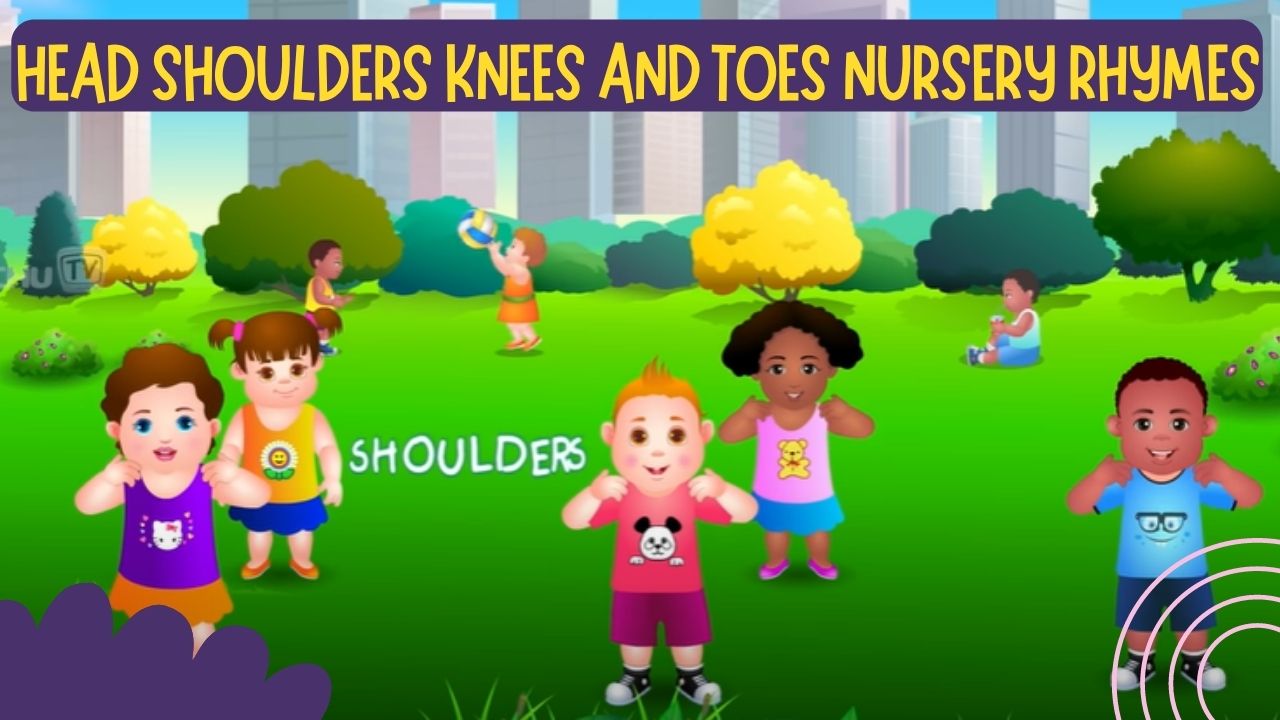Humpty Dumpty Nursery Rhymes | Rhymes for nursery | Nursery rhymes songs | Nursery rhymes lyrics | Rain Rain Go Away Rhymes for Nursery | Head Shoulders Knees and Toes Nursery Rhymes | Baby rhymes | Baby nursery rhymes | Top 50 Rhymes for Nursery with Picture | Rhymes for kids | English nursery rhymes | Nursery rhymes for kids
The Energetic Rhythm of “Head Shoulders Knees and Toes Nursery Rhymes”
“Head, shoulders, knees, and toes, knees and toes…” The opening lines of the rhyme set a lively and energetic tone. The rhythmic repetition captures the attention of young learners, making it a favorite in classrooms, playgroups, and at home.

Tracing the Origins of
The origins of “Head, Shoulders, Knees, and Toes” can be traced back to traditional American folk music. The rhyme’s simplicity and catchy tune have made it a timeless favorite in early childhood education.
Head Shoulders Knees and Toes Nursery Rhymes Lyrics
Head, shoulders, knees and toes,
Knees and toes.
Head, shoulders, knees and toes,
Knees and toes.
And eyes, and ears, and mouth,
And nose.
Head, shoulders, knees and toes,
Knees and toes.
March march march Let us all March
March March March Get your body charged
Head, shoulders, knees and toes,
Knees and toes.
Head, shoulders, knees and toes,
Knees and toes.
And eyes, and ears, and mouth,
And nose.
Head, shoulders, knees and toes,
Knees and toes.
Jump Jump Jump, Lets all Jump
Jump Jump Jump, make your muscle pump
Punch Punch Punch, Lets all Punch
Punch Punch Punch, Have a hearty munch
Head, shoulders, knees and toes,
Knees and toes.
Head, shoulders, knees and toes,
Knees and toes.
And eyes, and ears, and mouth,
And nose.
Head, shoulders, knees and toes,
Knees and toes.
Credit Source : ChuChu TV
A Playful Lesson in Body Awareness
At its core, “Head, Shoulders, Knees, and Toes” serves as a playful lesson in body awareness. As children touch each body part mentioned in the rhyme, they develop a deeper understanding of their physical selves.
Promoting Language Development and Memory Skills
“Nursery rhymes play a crucial role in early language development. “Head, Shoulders, Knees, and Toes” aids in memory retention, vocabulary expansion, and language fluency through repetition.
Embracing Music and Movement
The rhyme’s rhythmic structure invites children to embrace music and movement. As they dance and touch their body parts, young learners engage in kinesthetic learning, reinforcing their understanding of the rhyme.
Fostering Social Interaction and Bonding
Beyond its educational benefits, “Head, Shoulders, Knees, and Toes” fosters social interaction and bonding. Children can perform the rhyme together, creating a sense of togetherness and shared enjoyment.
An Invitation to Multilingual Learning
The simplicity of “Head, Shoulders, Knees, and Toes” makes it ideal for multilingual learning. The rhyme has been translated into various languages, allowing children worldwide to learn body parts in different tongues.
Also Read: Nursery Rhymes the Wheels on The Bus
A Song for Physical Development
“I’m a Little Teapot” is often associated with physical education and early childhood movement programs. The rhyme’s rhythmic actions contribute to physical development and gross motor skills.
Adapting the Rhyme for Creative Variations
The beauty of “Head, Shoulders, Knees, and Toes” lies in its adaptability. Parents, teachers, and children can create fun variations, introducing new movements and actions to keep the experience fresh and exciting.

Preserving the Rhyme for Future Generations
As we embrace the digital age, preserving the educational charm of “Head, Shoulders, Knees, and Toes” becomes essential. Parents, educators, and enthusiasts continue to pass down this beloved rhyme to ensure its enduring appeal lives on for generations.
FAQs on “Head Shoulders Knees and Toes Nursery Rhymes”
Q: Is “Head Shoulders Knees and Toes Nursery Rhymes
” suitable for all age groups?
A: Yes, the simple and interactive nature of the rhyme makes it suitable for young children and even toddlers.
Q: How can “Head Shoulders Knees and Toes Nursery Rhymes” aid in language development?
A: The repetition of body parts in the rhyme enhances vocabulary and language fluency in young learners.
Q: Can “Head Shoulders Knees and Toes Nursery Rhymes” be adapted for different languages?
A: Absolutely! The rhyme’s universal appeal has led to translations in various languages, promoting multilingual learning.
Q: Does “Head, Shoulders, Knees, and Toes” have cultural significance?
A: While its origins are in American folk music, the rhyme’s message of body awareness holds cultural significance worldwide.
Q: How can parents encourage children to perform “Head, Shoulders, Knees, and Toes”?
A: Parents can join in the fun by performing the rhyme with their children and encouraging joyful movement and learning.
Q: Is “Head, Shoulders, Knees, and Toes” still popular today?
A: Yes, “Head, Shoulders, Knees, and Toes” continues to be a beloved and timeless nursery rhyme passed down through generations.
In conclusion, “Head, Shoulders, Knees, and Toes” remains an engaging and educational nursery rhyme that celebrates body awareness and movement. Its energetic rhythm and interactive nature make it a favorite among young learners worldwide. As we continue to share this delightful rhyme with future generations, “Head, Shoulders, Knees, and Toes” will forever be a joyful celebration of music, movement, and the joy of learning.